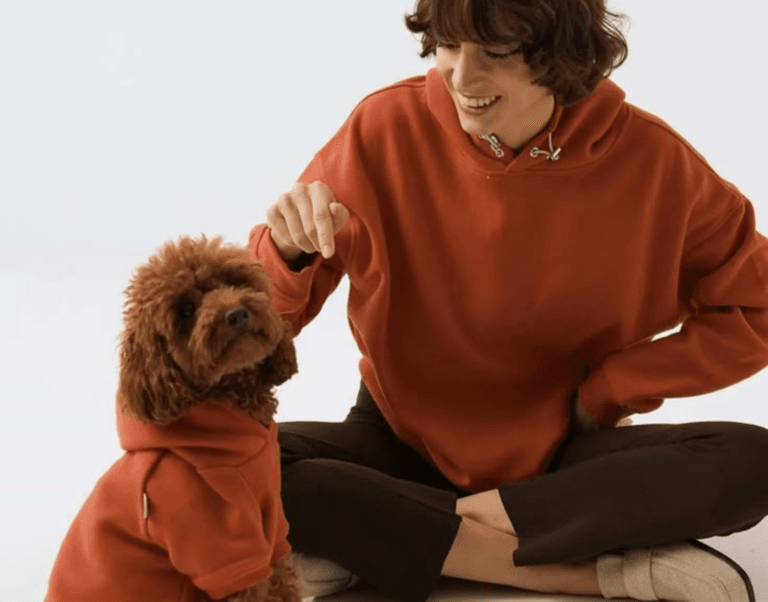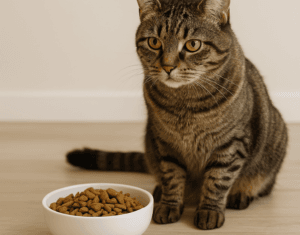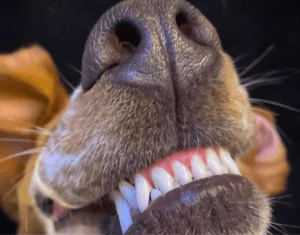So, you finally did it; you got yourself a dog! Congratulations! Welcome to the world of fur-covered furniture, zoomies at 2 AM, and a new best friend who thinks your toilet trips require an audience and (let’s be real) a lot more chaotic. No matter how many cute puppy videos you’ve watched, nothing quite prepares you for the reality of a four-legged tornado zooming through your house.
Owning a dog is like having a toddler that never grows up. As someone who’s been through the trenches of dog parenthood, making every mistake in the book; I’m here to help you avoid the biggest rookie blunders. Trust me, your furniture, sanity, and new pup will thank you.
Table of Contents
One minute, you’re basking in the cuteness of your fur baby; the next, you’re questioning every decision you’ve ever made. When I first brought home Max, I was convinced I had everything under control. Spoiler alert: I didn’t.
From overfeeding to skipping training sessions, I made almost every rookie mistake. We all start somewhere. But if you want to avoid the “Oh no, what have I done?” phase of pet ownership, let me share some hard-earned lessons with you. So you don’t have to learn the hard way like I did.
Training Chaos: When Everyone Has a Different Rulebook
You want your pup to be a part of the family, right? That’s great! Dogs thrive in a loving home where they feel included. But if you let everyone pitch in on training, your pup is going to be more confused than you were in high school algebra (you barely made it through that class).
One minute, Aunt Linda is giggling as she sneaks your pup table scraps, teaching them that begging at the dinner table is a good thing. The next minute, Uncle Joe is yelling, “No begging at the table!” like it’s a crime punishable by doggy jail. Then your cousin Sarah is encouraging your pup to jump up for belly rubs, while Grandma is threatening to knit a new leash just to keep that “bad dog” under control.
See the problem? Your poor dog has no idea what’s expected. It’s like they’ve been dropped into a game with constantly changing rules, and they don’t even know what sport they’re playing. One day, jumping on guests is okay; the next, it’s a big no-no. The inconsistency makes training harder, and soon, your pup will stop listening altogether because, well, what’s the point if the rules keep changing?
The fix: Set clear, consistent rules that everyone in the house follows. If the rule is “no jumping,” then nobody should encourage it, not even that one family member who thinks it’s adorable (looking at you, Aunt Linda). If begging isn’t allowed, make sure everyone resists those puppy-dog eyes. Stick to the plan, and your pup will grow up knowing exactly how to behave, without needing a doggy therapist to work through their confusion.
Thinking Training Tools Are “Mean”
Muzzles, crates, harnesses; they’re not medieval torture devices, I promise. Your dog isn’t starring in some canine version of Gladiator. Used correctly, these tools are absolute lifesavers. But for some reason, new dog owners tend to look at them like they’re weapons of mass destruction.
Let’s start with crates. People hear the word crate and immediately imagine their dog sobbing behind bars like they’re in a maximum-security prison. In reality, a crate is a safe space, like a cozy little apartment for your pup. It helps with potty training, prevents destruction when you’re not home (RIP to all the shoes that didn’t survive), and gives your dog a spot to relax when they need a break from all the chaos.
Ever taken your dog for a walk and felt like you were competing in a World’s Strongest Person contest, except you’re losing badly? A well-fitted harness or anti-pull leash can save your arms, and your dignity. It’s not a punishment; it’s simply physics. You wouldn’t drive a car without a seatbelt, so why let your dog drag you into traffic?
Then there are muzzles. Oh boy. I once suggested muzzle training to a friend whose dogs were constantly fighting, and she acted like I told her to send them to boot camp. Spoiler alert—one dog ended up looking like it lost a boxing match. It could’ve been avoided.
It can prevent a bite, stop your dog from eating dangerous stuff off the ground, and save lives in emergencies.Save yourself the stress and embrace the tools.
The Fix: Educate yourself! Training tools are only “mean” if used incorrectly. A crate should be a positive space, not a punishment. A harness should fit properly to prevent discomfort. And a muzzle should be introduced gradually with treats and praise, so your dog sees it as no big deal.
Think of these tools like a seatbelt or a baby gate, they’re there to help keep your dog safe, not to ruin their fun. Need quality training tools? Check out Chewy for comfortable crates, well-fitted harnesses, and dog-friendly muzzles that make training a breeze!
So, save yourself the stress (and possible vet bills) and embrace the tools that make life easier for both you and your furry best friend.
Falling for the “Dogs Should Never Eat Grains” Myth
At some point, someone somewhere declared grains the ultimate villain in a dog’s diet, and suddenly, every new pet owner was sprinting to buy overpriced, grain-free kibble like it was the key to eternal puppy health. “No grains! Only the finest, most organic, ancestral, wolf-approved diet for my fur baby!” Meanwhile, their dog is over in the corner licking the floor and eating literal trash.
Let’s set the record straight; dogs are scavengers, not five-star restaurant critics. Wild canines aren’t out there rejecting grains like a picky toddler refusing broccoli. Dogs can eat grains, and in fact, they need them for a balanced diet.
Sure, not all grains are great. Low-quality fillers like corn and wheat? Probably not the best. But banning all grains from your dog’s diet just because some random post said so is like deciding to live on only kale and then wondering why you feel miserable.
The Fix: Before you jump on the latest diet trend, do some research! If you want to cut out certain grains like corn, wheat, or barley, that’s fine; just make sure you’re replacing them with actual nutritious alternatives. Ancient grains like quinoa, millet, or brown rice? Solid choices. High-quality dog food that includes grains in a balanced way? Even better.
Check out Amazon Pet Supplies and Chewy for vet-approved options for your dog’s overall health.
Bottom line; your dog is not a carb-phobic influencer. Give them a properly balanced diet, and they’ll be far happier than if they’re stuck eating overpriced grain-free kibble while still sneaking bread crusts off your plate.
Feeding Table Scraps Like You’re Running a Doggy Buffet
I get it, you’re enjoying a delicious burger, and then you glance down. There they are. Those big, round, soul-piercing puppy eyes, staring up at you like they’ve never been fed a day in their life. Suddenly, your heartstrings are being tugged like a harp at a wedding, and before you know it, a piece of your burger is disappearing into their happy little mouth. Just a little treat, right? No harm done?
Congratulations, you’ve just created a picky eater, who will now sit by your table every meal, judging your plate like Gordon Ramsay in a bad mood. One day, you’ll pour them a perfectly good bowl of dog food, and they’ll look at you like, Excuse me? Where’s the grilled salmon? The medium-rare steak? The artisanal cheese?
And it gets worse, constant table scraps don’t just create a picky eater, they can also lead to obesity, digestive issues, and a whole world of bad habits. Ever had a dog steal food off the counter? Beg at every single meal? Develop stomach issues because their diet is now a chaotic mix of kibble, fries, and last night’s spaghetti? Yeah, that’s where this road leads.
The Fix: If you absolutely must give your dog human food, do it the right way. Stick to healthy, dog-safe options like plain cooked chicken, veggies, or the occasional fruit treat, and in moderation. Better yet, mix it into their actual dog food instead of feeding straight from the table. And if they try to guilt-trip you into another bite of your meal? Stay strong. That adorable little con artist will survive just fine on their own food.
Trusting the Viral Post or Your Vet Blindly
Ah, the internet, a magical place where you can find everything from DIY dog food recipes to conspiracy theories about poodles secretly ruling the world. One minute, you’re casually Googling “Why is my dog scratching?”, and five clicks later, you’re convinced your pup has some ultra-rare, Amazonian jungle disease that requires urgent treatment only available from a shaman in Peru.
During summer, Max started licking his paws a lot. Instead of just checking with the vet like a normal person, I dove headfirst into the internet’s bottomless pit of pet forums. After a few hours of reading horror stories, I was 99% sure Blaze had some rare tropical parasite. And guess what? I panicked and booked a whole vacation to the mountains because one article convinced me he needed to “detox from city air.” Yeah… turns out he just had seasonal allergies.
Vets are professionals, but even they aren’t infallible. Trust your gut, do your research, and always get a second opinion when something doesn’t feel right.
The Fix: Be smart. Use the internet as a tool, not your primary medical source. Research, compare credible sources, and don’t fall into the WebMD-style rabbit hole where every symptom leads to a worst-case scenario. And when it comes to vets? Get second opinions. Ask questions, if something doesn’t sit right with you.
At the end of the day, you are your dog’s best advocate. So don’t blindly trust Dr. Google, but don’t just nod along to your vet without understanding what’s going on either. A little research, and a lot of love will keep your pup happy, healthy, and (hopefully) not diagnosed with a mythical jungle disease.
Ignoring Dog Body Language and Assuming All Dogs Are the Same
Imagine trying to have a conversation with someone who only speaks in riddles. You ask a simple question like, “Hey, do you want pizza?” and they respond with, “The moon whispers secrets to those who listen.” What?! That’s exactly what’s happening when you ignore your dog’s body language. They’re talking, just not in a way that involves words.

Max taught me real good. One afternoon, I took him to a dog park, and he kept giving me that look, ears pinned back, tail stiff, body tense. But I brushed it off, thinking, “Oh, he’s just being dramatic.” A minute later, a super-friendly Lab bounded up to him, tail wagging like crazy. Before I could even say, “Be nice, Max!” he gave a warning growl. The Lab didn’t take the hint, and Max let out a snap—not a bite, just a “Hey, back off, buddy!” But of course, I felt like the worst dog parent ever.
Just because your neighbor’s Golden Retriever greets every stranger like a long-lost friend doesn’t mean your high-energy Border Collie won’t have boundaries. Learn your dog’s signals before you end up in an unnecessary disaster.
The Fix: Dogs have their own way of communicating, and it’s not just about a wagging tail. A happy wag looks different from a nervous wag. Stiff posture? That’s a warning. Lip licking? Could be stress.
Start paying attention to the little things like ears, eyes, tail position, even how they shift their weight. The more you “listen” to what your dog is saying, the fewer awkward (or chaotic) situations you’ll find yourself in.
Choosing the Wrong Breed for Your Lifestyle is Like Buying a Sports Car for Stop-and-Go Traffic
Sure, that Husky looks majestic in Instagram photos, but if you think it’s going to be happy lounging on the couch all day while you binge-watch Netflix… think again.
I once thought about getting a Border Collie because, well, they’re smart. But after five minutes of research, I realized that would be a disaster. Max, my actual dog, is high-energy enough, I can’t imagine dealing with a dog that needs a full-time career just to stay sane.
The Fix: Before bringing a dog home, do your research. If you’re a runner who loves the outdoors, sure, get that Husky. If your idea of exercise is walking to the fridge, maybe a Bulldog is more your speed. Retrievers need something to retrieve. And if you don’t give your dog a job, they’ll find one like redecorating your home by chewing up the couch or turning your backyard into an excavation site. Need dog toys, training tools and care products? Explore Only Natural Pet and Chewy for the best selection!
Bottom line? Get a dog that matches your energy level, not one that completely outpaces it. Trust me, both you and your furniture will be much happier!
Key Takeaways
- Inconsistent Training Confuses DogsIf different people in the house enforce different rules, your dog won’t know what to follow. Set clear, consistent guidelines.
- Training Tools Aren’t Mean – Crates, harnesses, and muzzles are helpful when used correctly. They ensure safety and structure, not punishment.
- Grain-Free Isn’t Always Better – Dogs need a balanced diet, and completely avoiding grains can be unnecessary. Do your research before following diet trends.
- Table Scraps Create Bad Habits – Feeding from the table encourages begging and picky eating. Stick to dog-friendly treats in moderation.
- Don’t Trust Everything Online or Blindly Follow Your Vet – Research from reliable sources and seek second opinions when needed.
- Dog Body Language Matters – Dogs communicate through posture, tail movement, and facial expressions. Ignoring signals can lead to unnecessary stress or conflict.
- Choosing the Wrong Breed is a Disaster – High-energy dogs need exercise, working breeds need tasks, and some dogs just aren’t suited for small apartments. Pick a breed that fits your lifestyle.
So there you have it! Raising a dog is a wild, hilarious, and sometimes frustrating ride, but avoiding these rookie mistakes will make the journey a lot smoother. Your pup isn’t just a pet, it’s family. And like any family member, they’ll push your buttons, steal your socks, and make you question your sanity. But in the end, they’ll also fill your life with so much joy and unconditional love that you won’t be able to imagine life without them. Now, go give your dog a belly rub, and maybe hide your favorite shoes while you’re at it.





